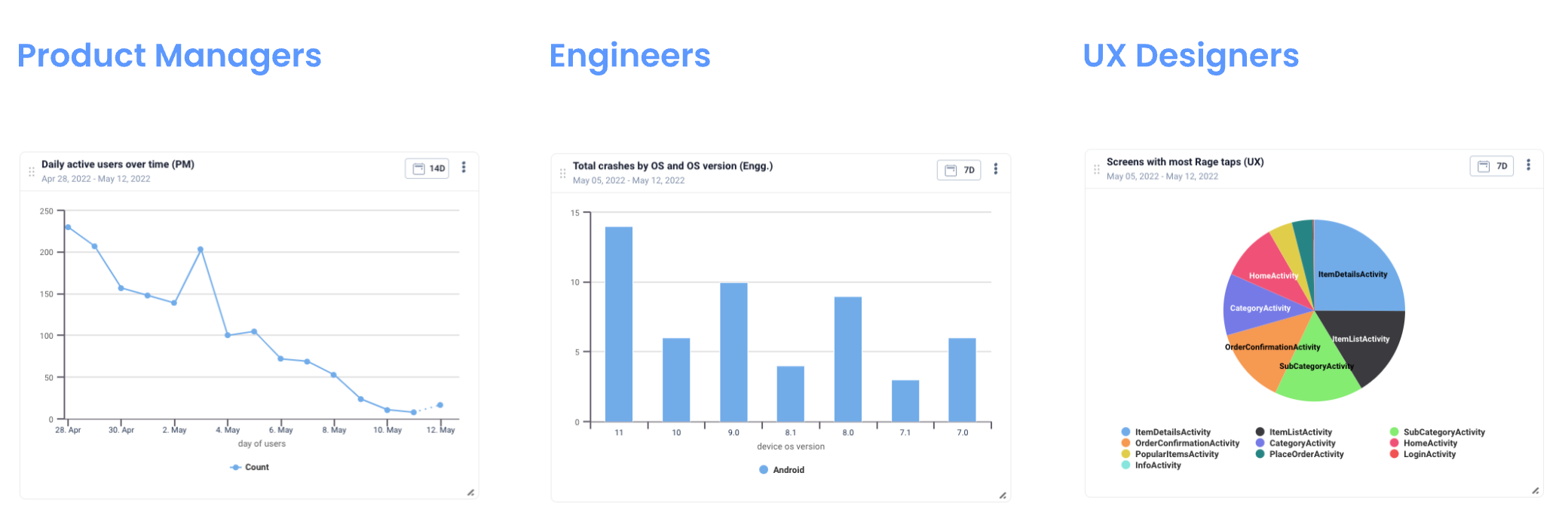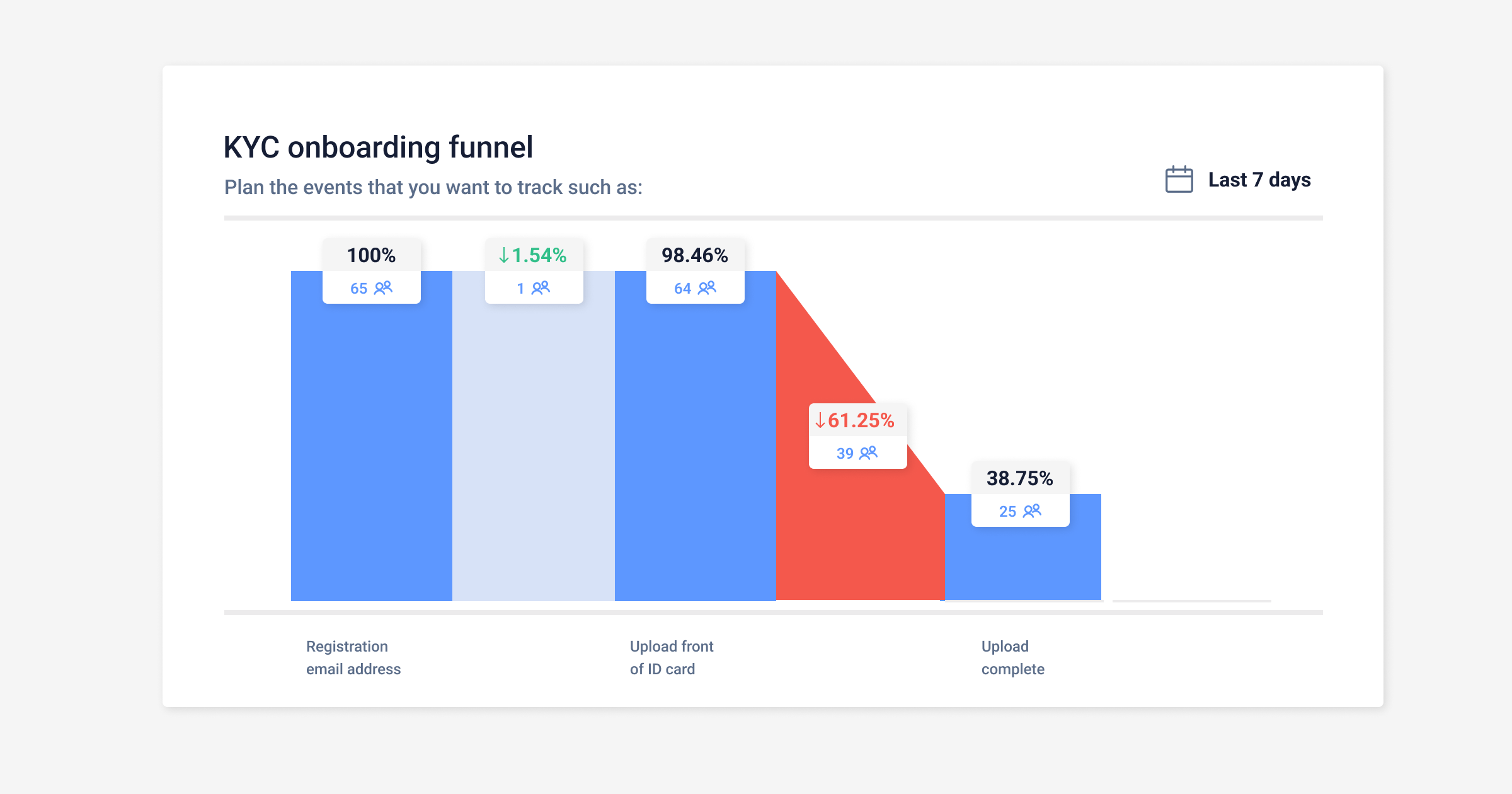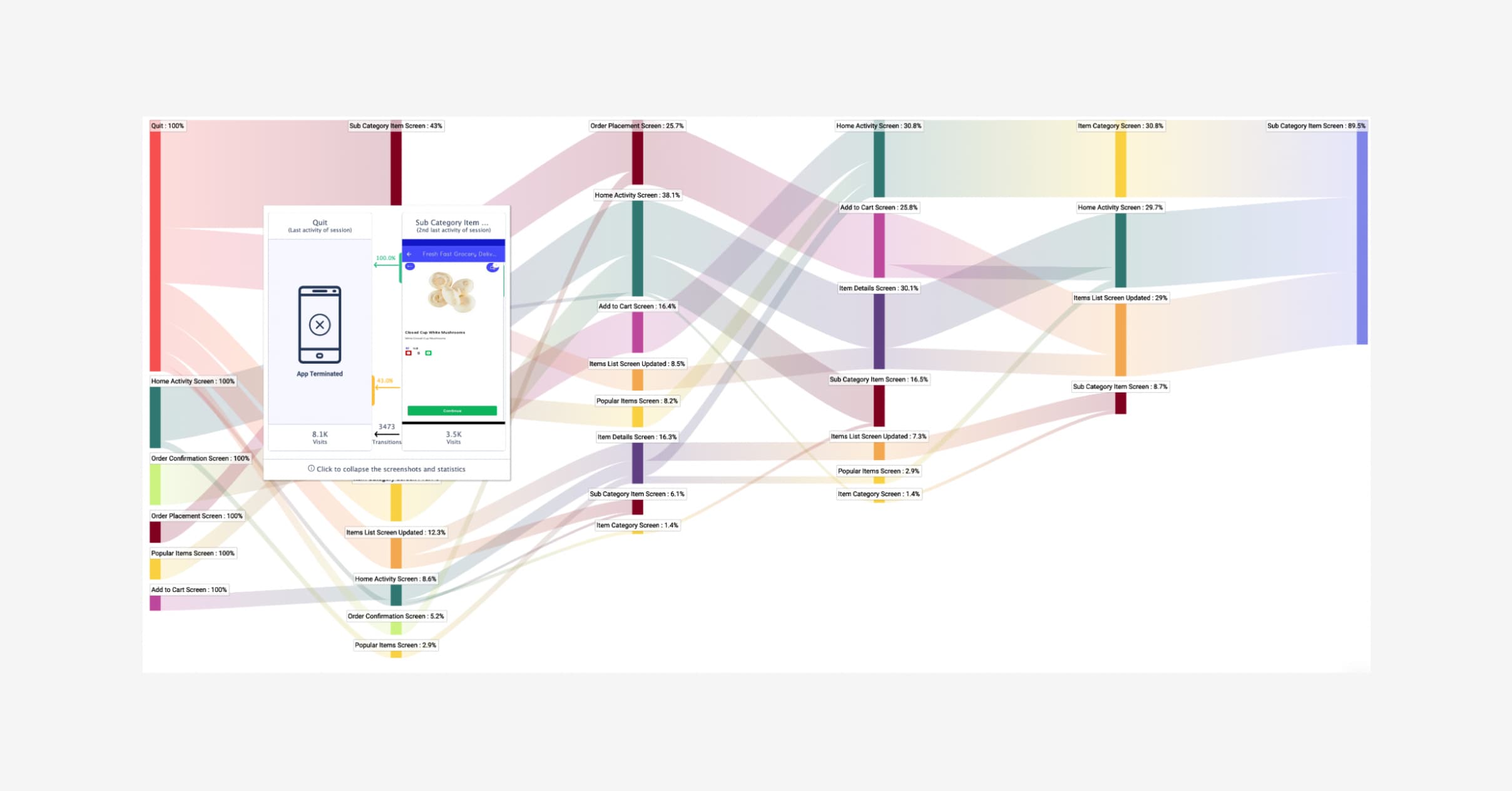Practical Guide to Product Management Analytics
PUBLISHED
14 May, 2023

Growth Marketing Manager
Do you want to learn how to use product management analytics to maximize customer retention? If so, you’re in the right place. Product management analytic tools allow software product teams to dive deep into consumers’ experiences with their digital products.
Product analytics software like UXCam are multi-faceted. With software like this, users can access tools like heatmaps, issue analytics, and session segmentation.
Today, we’re giving you a practical guide to product management analytics. Read on to discover how to use them effectively to give your customers the best experience.
What is product management analytics?
Product management analytics is the process of collecting and analyzing data about how users interact with a product. This data can be used to understand user behavior, identify areas for improvement, and make decisions about product development.
Product management analytics help product managers get a deeper understanding of in-app user behavior and identify issues within their products. With these insights, they can develop solutions to fine-tune their app's performance. In turn, product teams and companies can increase customer retention and boost business growth.

To break it down a little more, product management analytics software - such as mobile app analytics tools - work by collecting data using a variety of sources and techniques such as;
User behavior analytics: By tracking various user events like screen views, clicks, crash counts, rage taps, quit rate, purchases, and more, product teams gain valuable insights into how users interact with the product. This data-driven approach enables a comprehensive understanding of user behaviors, highlighting areas where users may encounter difficulties or obstacles.
A/B testing: This technique is used to compare the effectiveness of two different versions of a product or feature. By conducting controlled experiments, product teams can gather data on user responses and behaviors to determine which version delivers better results and enhances the overall user experience.
User surveys: This involves collecting feedback from users about their experience with a product. By understanding user perspectives and addressing their concerns, product teams can refine and enhance the product to align more closely with user expectations, fostering greater satisfaction and loyalty.
Session recording & replay: This technique allows product managers to capture and review real-time user sessions, observing their interactions and behaviors within the product. By replaying these sessions, product teams can gain deep insights into user experiences, identify usability issues, and understand user frustrations.
Why is product management analytics important?
Product management analytics is an essential tool for product managers. By collecting and analyzing data about user behavior, product managers can make informed decisions about product development that will improve the user experience and increase product success.
Here are some of the benefits of using product management analytics:
Improved user experience: Understanding user behavior through product management analytics allows product managers to pinpoint specific areas in their apps that need improvement. This deep understanding enables the creation of a seamless and user-friendly experience, increasing user satisfaction and fostering long-term engagement.
Increased product success: Data-driven insights obtained from product management analytics pave the way for targeted enhancements. By identifying and addressing pain points, product managers can optimize their offerings, resulting in improved sales, heightened user engagement, and amplified customer satisfaction, driving overall product success.
Reduced development costs: Using product management analytics to uncover user behavior patterns prevents costly development mistakes. This proactive approach empowers product managers to rectify issues early on, saving valuable resources, time, and financial investments, ultimately reducing development costs and increasing efficiency.
With product management analytics, product managers can learn what their customers want and develop their products to reflect this. For example, if your product analytics shows that users consistently quit on a particular page, you may conduct mobile usability testing to look into the reason why, such as slow loading times, and fix the problem. Equally, if there are any features of the application that customers don’t really use, PMs can remove these from the app and focus their efforts on improving the more popular features. This can save them money, as well as time and effort tracking features that customers don’t want.
How to effectively use product management analytics
If you’re going to use product management analytics for your applications - and you definitely should - you need to do it properly. Let’s have a look at how you can manage the software effectively:
1. Identify your metrics
Before you begin, you need to hone in on the metrics you’re going to track and analyze. There are loads of possibilities. The metrics you choose might depend on the purpose of your application, as well as the analytical tools you use to track them.
Here are some metrics that you should consider tracking:
Conversion rate - Track how many people download your app within certain time frames e.g., how many per day, week, or month. You may also track the channels where your downloads come from.
Engagement rate - App engagement rate includes its own set of metrics. It assesses how people engage with different application features. Measure metrics like session length, daily users, and stickiness.
Retention rate - App retention rate measures how many users continue to use your app vs. how many either delete it or stop using it.
Number of crashes - How many crashes and bugs do users experience, and do these figures correspond with the number of drop-offs, for example?
Feature adoption rate - Track the number of people using specific features within your application. Compare this to the number of active users to determine the success of each feature.
Tracking the right metrics will help you understand where to invest the most money. For example, if the average session length is relatively short, but the download rate and churn rate are both high, you might conclude that the app doesn’t deliver what downloaders expect. In this case, you can look at how well the application description and marketing materials align with the product.
2. Audit your current analytics process
Your next step is to decipher where your business currently stands in relation to gathering and using data to measure your app’s performance. Here are three common approaches:
Minimal data processing: If you’re collecting minimal data, such as download rates, you don’t have enough data points to gather meaningful insights. Therefore, using it in a strategic way is near impossible.
Validating decisions with data - You collect and process a fair bit of data and use it regularly in your road maps and strategies. The problem, however, is that you use data to validate the decisions already made as opposed to using data to drive decisions.
Data-driven decisions - In stage 3, you’ll make decisions based on the data you collect. For example, increasing ad spend to promote your most-used app features. Even though this is the ideal goal for product management analytics, it’s far from the end. There’s always room to expand your analytics and data collection.
Identify which stage your business falls into and use that as a starting point to improve your strategies.
3. Use the right product management analytics
Whether your goal is to increase your app revenue or boost customer retention, product management analytics software can help you get there. This software can give you the information you need to optimize your product and drive conversions. Use your product management analytics to continue to scale your product.
Here are three vital components of effective data operations:
Customer journey and Funnel analysis

Tools that enable you to analyze customer journeys and funnels to track every touchpoint. This helps you understand how your customers interact with your brand and product at each stage.

Roadmap the customer journey when they’re using your application. Use analytics to identify bottlenecks within the app, as well as patterns of behavior. You might, for example, identify which screens users commonly exit your app from. This might alert you to a UI issue that you can prioritize fixing.
Segmentation
Segment your customers based on attributes like session durations, number of frustration signals, and returning users.
You can perform A/B tests to segment your users further. Let’s say, for example, you want to test a new notification feature. You show one-half of your disengaged users one type of notification and one-half another type. You then note any changes in behavior in response to these notifications and segment your test subjects based on these behaviors.
Retention analysis
Retention analysis involves understanding which type of customers continue using your application and why. You can use your customer journey data and segmentation data to understand the reasons behind customer retention and churn rate fully.
For example, do more Android users or iOS users uninstall your app after a certain amount of time? You might notice a correlation between users who exit your app from a specific page and their device’s operating system, for instance.
Here are the valuable insights you can gain from in-depth retention analysis:
Target users - Your target users are the most valuable. They’re the ones who use your app for the longest time.
Find and attract target users - By identifying target users, you can find out where they come from, what makes them stick around, and how to get more of them to download your app.
Identify churn risk behaviors - See what kinds of behavior indicates a user will stop using your application. For example, only checking in once a week.
Identify friction - With retention analysis, you can identify areas of friction within your app that might cause churn. You can then amend these before any more damage is done.
4. Invest in a product management analytics tool
The simplest way to conduct in-depth application analysis is to invest in a product management analytics tool like UXCam.
UXCam enables product managers to track and measure user behavior. It generates detailed, easy-to-understand reports. With these, you can track your KPIs effectively and make decisions based on real data.
Whichever product management analytics software you choose, ensure that it’s scalable and flexible.
Enhance your app user experience
To enhance UX, you must track users and analyze their behaviors. Once your analytical tools are in place, you can identify weak spots within your application. Use session recordings of the front end to figure out what's going on in the back end.
Sign up for UXCam for free and get access to features like session recordings, user analytics, and frustration signals. Use your insights to make decisions that will maximize customer retention and user engagement.
Related articles
Best product analytics tools and software
13 Best product management tools
A Practical Guide to Mobile App Product Management
AUTHOR

Tope Longe
Growth Marketing Manager
Ardent technophile exploring the world of mobile app product management at UXCam.
What’s UXCam?
Related articles
Session Replay
Mobile Session Recording - The Complete Guide 2025
Why session replay is such a valuable feature, and what you should look out for when starting...

Annemarie Bufe
Content Manager
Product Management
14 Best Product Development Software for Every Team 2025
Discover the 14 best product development software tools to streamline collaboration, track progress, collect feedback, and build better products...

Tope Longe
Growth Marketing Manager
Product Management
13 Best Product Management Tools 2025 & When to Use Them
Find out the top tools that the best product managers use daily to perform better at...

Jane Leung
Content Director
